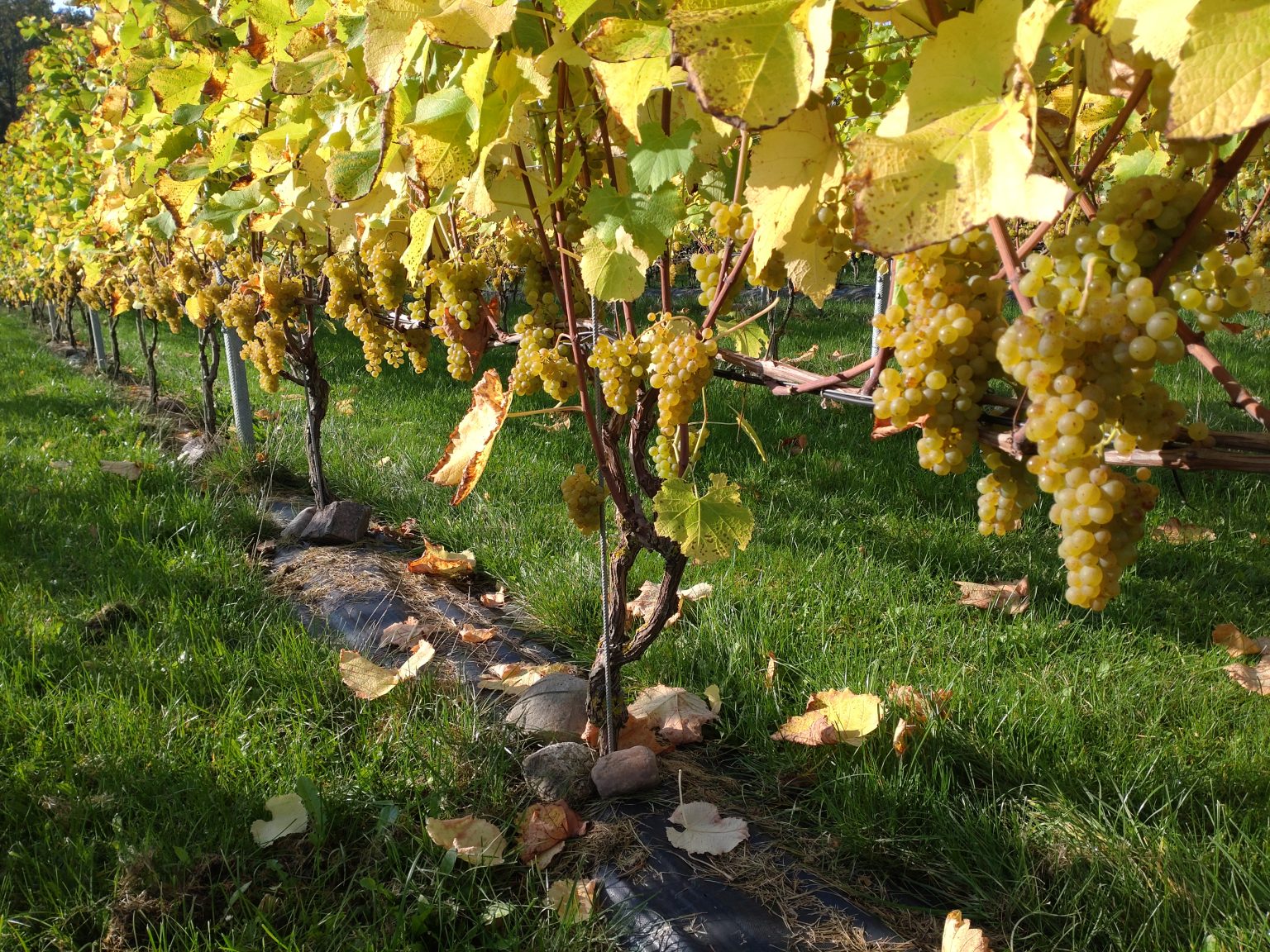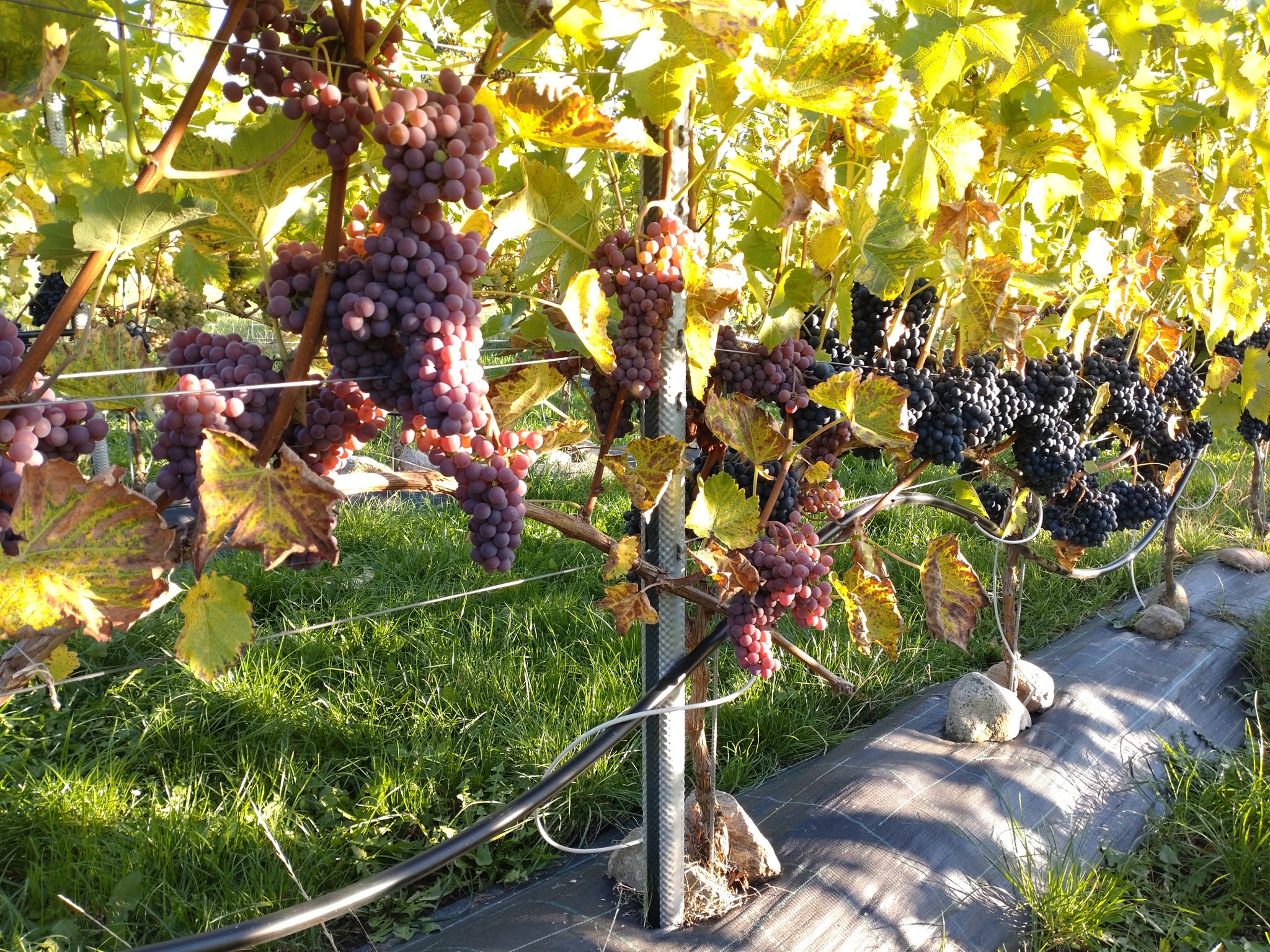Vrangbækgård wine
Danish wine. Is it realistic at all? And can it be made at such a high level that it is interesting at all? Yes, the most important starting point is that one must be able to grow some healthy and mature grapes. Therefore, you have to choose the right grape varieties, carefully care for them - and finally have control of things in the winery.
“Det er svært at lave god vin af dårlige druer, men det er let at lave dårlig vin af gode druer.”
In 2011, the first two rows of wine were planted on a south-facing slope close to the farm as a family-hobby project. The following year, a few more rows were added, and gradually the field has grown until it is now so large that the yield exceeds what we can handle to drink ourselves. That is why in 2021 we took the leap from hobby breeders to business growers, so that we can now also sell the wine we produce.
Along the way, some grape varieties have been torn up and replaced by others, so that the field now contains the varieties we have the greatest confidence in.

The green grapes
- To our white table wines and sparkling wines
We have the most of the green grapes, and the most important variety is 'Solaris', which in the scent and taste profile can be reminiscent of 'Souvignon Blanc', but which - with safe maturation and high concentrations of both sugar and a refreshing acid - gives powerful, full -bodied aromatic wines.
In addition, we grow 'Johanites', which under Danish conditions, is a very late maturing variety, which is pronounced useful for sparkling wines. The same goes for 'Villaris', which, however, also in the good years joins the table wine blend with 'Solaris'.
Finally, 'Muscaris' is an aromatic variety of the muscat type, which contributes aromatic complexity to both white and rosé wines. Most recently, we have planted 'Souvignier Gris' and 'Hibernal' on experimental plan.
‘Souvignier Gris’ modner sent i Danmark og anvendes derfor primært til mousserende vin. Klaserne er fyldige og smukt røde. Profilen minder om ‘Pinot Gris’.
‘Hibernal’ er en nyere sort udviklet ved universitetet i Geisenheim. Den modner sent i Danmark, men opnår alligevel en aromatisk profil. Vi havde vores første høst af sorten i 2022, og den vil indgå i de mousserende vine i den nye årgang.
Of all these grape varieties, approx. No matter the table wine and sparkling wine.

The blue grapes
– til de røde vine fra mousserende rosé til hedvin.
De blå druer domineres mængdemæssigt af ’Bolero’, som giver et stort udbytte velegnet til specielt mousserende rosevine. Med passende udbyttekontrol og opdelt høst kan ’Bolero’ også udvikle en sen høstet andel af mere modne druer. Disse kan indgå i blends til både rosé- og rødvine. Her blendes den med sorten ’Triomphe d’Alsace’.
’Triomphe d’Alsace’ er en ca. 100 år gammel fransk/tysk hybrid med en stærk resistens mod sygdomme. Den modner godt i Danmark. Klaser og bær er relativt små, hvilket resulterer i rødvine med en god kompleksitet. Denne sort er hovedsorten i vores rødvine, som dog kun fremstilles i de bedste år, og derudover er den grundlaget for vores hedvin.

I de år, hvor der ikke fremstilles rødvin, indgår alle blå druer i rosévinene, som derved får særlig god kvalitet i disse ellers mindre gode år. En del af rosévinen er desuden fadgæret, hvorved den får endnu mere kompleksitet.
Endelig fremstiller vi også en hedvin. Når druerne har gæret i ca. 3 dage hæves den delvist gærede vin ud, som straks forstærkes med alkohol til ca. 20% vol., hvorved gæringen standses, og resten af frugtsukkeret i vinen derfor bevares.
Efter gæringen kommes hedvinen på et specialfremstillet ombygget portvinsfad på 67 liter. Modningen sker hurtigere på små fade så efter et par år opnås en udvikling af vinen svarende til 8-10 års lagring på normale store portvinsfade.
Vinmarkens beliggenhed

Our vineyard is located on a south -facing slope close to the coast at Lundeborg on Funen, and with the help of careful pruning and very high foliage walls with large row spacing (to avoid shade) are obtained maximum yield from the sun's rays.
This means that the field is able to deliver very nice and mature grapes almost every single year. Therefore, we do not need to manipulate the wine in the winery with extra sugar addition or reduction of acid. It results in naturally balanced and tasty wines.
Organic cultivation of robust varieties
We grow a range of robust grape varieties, which with a short development time from bud shooting to maturation and harvest is suitable for cultivation in the cool Danish climate. They are the result of the German processing persistent crossing work for more than 100 years. (Piwi = Pilzwiederwiderstandsfähige Rebsorten.)
Listen af druer, der med mere eller mindre held kan modnes i Danmark, er vi nu ved at “tage et trin op” med udvikling af en række nye druesorter. Se siden “Udvikling af nye sorter til ‘cold climate‘.
The European grape Vitis Vinifera has been crossed with wild vitis species from North America in particular, thereby achieving a great robustness (resistance to diseases). The complex genetic background makes them particularly suitable for organic cultivation with minimal use of pesticides.

2-3 preventive sprays with spray swoven and baking soda (baking powder) per season. In dry summers, like the past few years, sprays may well be avoided, but should nevertheless be implemented so as not to overpower the natural resistance of the plants.
The field is fertilized with organic fertilizer in dried pill form.
No weeds are used as the plants are planted in a small soil covered with weeds. In the plant hole is supplemented with coconut mats and hand -sluggling.
The farm's chickens and ducks help keep the green areas between the wine rows, while 2 Swedish farm dogs and a falcon pair keep moss pig away.
